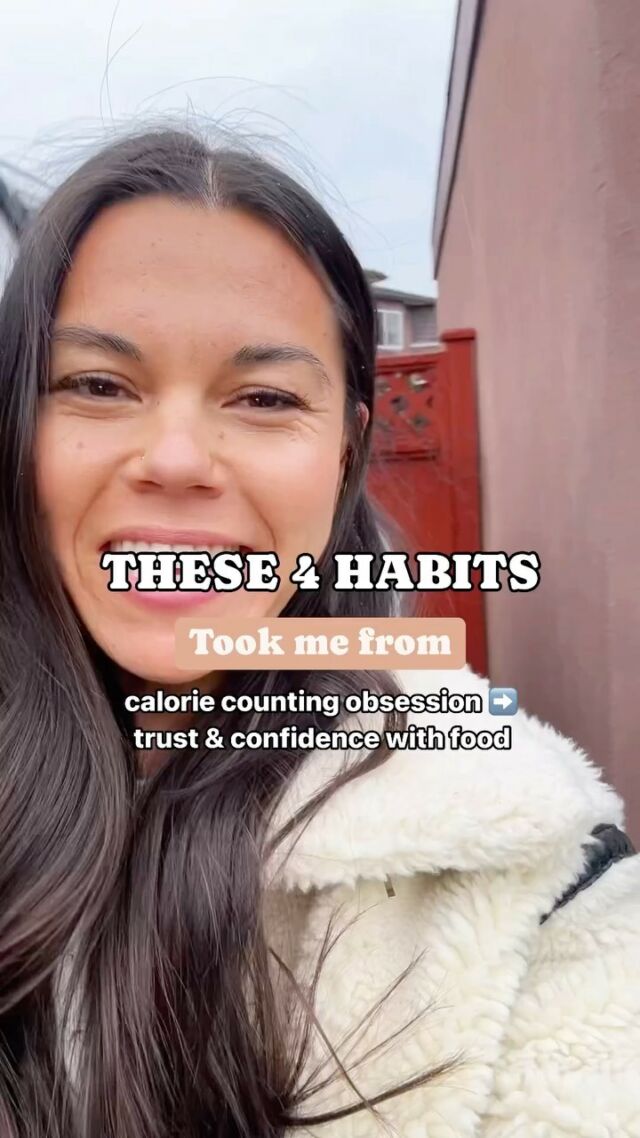While food is meant to nourish us and bring joy and connection to our lives, it can often make us feel at odds with our body. If you’re looking for a better relationship with food and your body, understanding your hunger – and that there are actually three different types of hunger, each with their own needs – is fundamental. It can help you stop overthinking every decision you make, stop obsessing about food and stop the battle with emotional eating. Here’s how to get started!

You’ve put the kids to bed, the laptop is shut off for the night, and you just want to relax and zone out! Next thing you know, you’re at the bottom of the chip bag or scraping the ice cream bowl clean and wondering, “Why am I eating so much?!” Maybe you’re wondering why you’re eating at all?
If this sounds familiar, you’re not alone. I have definitely been there, and as a dietitian, this is one of the most common frustrations clients come to me with.
There is no right or wrong reason to eat but if you’re feeling frustrated that you can’t seem to break this cycle, having some insight into why you’re eating in the first place can help you make an intentional decision about what you truly need in that moment.
Ask yourself: Am I actually hungry? Is there another need that’s going unmet?
In this article I’m sharing all the answers to these questions to help you gain a more comprehensive understanding of hunger so you can truly become the expert of your own body.
You can also jump to any of the sections of this post by using the links below!
- Why Am I Eating So Much?
- The 3 Types of Hunger
- Signs of Hunger
- How to Tell if it’s Emotional vs. Physical Hunger
- What to do When it’s Physical Hunger
- Commonly Asked Questions About Hunger
The goal here is not to make you feel guilty when you’re eating for reasons other than physical hunger but to empower you with a better understanding of your body so that you can make decisions that make you feel good body, mind and soul.
Why Am I Eating So Much?
While we’re quick to put blame on ourselves, or feel as though there’s something wrong with us for wanting to eat, hunger is actually a good thing!
Experiencing hunger means that our body’s basic metabolic functions are operating to keep us alive — food provides fuel for our heart to beat, our lungs to pump, and allows us to turn the calories (a.k.a. energy) we eat into usable energy to live out our day-to-day lives.
But what about those frustrating nighttime cravings!?
Did you know that there are actually different types of hunger? In this article, I’m sharing the three types of hunger (as defined by Craving Change – a cognitive behavioral program for addressing cravings ) and how you can identify them so that you can start to work towards a more trusting, harmonious relationship with food and your body.
Being able to identify and understand the difference allows you to honour what truly feels best for YOU in that moment when hunger or cravings arise.
Ready to Transform Your Relationship with Food?
Explore not just what you eat but why you eat, how you feel when you eat and any patterns that affect how you feel or impact any choices you make and start your journey to food freedom today!
What are the 3 Types of Hunger?
Stomach Hunger (Physical hunger): A physical need for food or fuel. Tends to build slowly and increases the longer we go without eating.
Mouth Hunger: A craving related to the senses. When we crave a particular aspect of a food or eating experience (salty, sweet, crunchy).
Heart Hunger (Emotional Hunger): An urge to eat driven by emotions and how we’re feeling mentally, not physically. This can be any emotion from sadness, stress or anxiety, to joy or celebration.
Signs of Hunger
Stomach Hunger
- Grumbling stomach
- Feeling light-headed or dizzy
- May present as starting to think about food more often
- Builds slowly
- Satisfied by eating
Mouth Hunger
- Unrelated to physical need for food or fuel
- Independent of when you last ate
- A craving for a specific type or aspect of food — salty, sweet, crunchy
- Satisfied by eating the specific type or aspect of food you’re craving
Heart Hunger
- Unrelated to physical need for food or fuel
- Independent of when you last ate
- Desire to eat to soothe uncomfortable emotions
- Urge to eat to avoid uncomfortable emotions (stress, sadness)
- Can come on quickly
- Generally not satisfied by eating
How to Tell if it’s Emotional Hunger vs. Physical Hunger
Initially it can be difficult to differentiate but with some practice it can become second nature.
A great tool to start exploring the different types of hunger is to do a body scan. Start with a physical scan and see if you may be experiencing any of the signs of physical hunger. Next, do a mental/emotional scan. What thoughts are you having? Are you feeling sad? Bored? Stressed?
My recommendation is to always assume physical hunger first! When you feel hunger or a craving come on, check to see when you last ate, and if what you ate was enough to sustain you!
Questions you can ask yourself:
- When did I eat last?
- What did I eat last? (What we include in our meals can have a big impact on how long we stay full).
- How am I feeling mentally and emotionally?
- Is anything bothering me right now?
Learning to decipher between the different types of hunger can take work, so don’t be discouraged if you can’t tell the difference yet.
Ready to Transform Your Relationship with Food?
Explore not just what you eat but why you eat, how you feel when you eat and any patterns that affect how you feel or impact any choices you make and start your journey to food freedom today!
Why is it so Important to Rule out Physical Hunger First?
If you delay or deprive true physical hunger, it will only build and lead to more intense and unstoppable cravings.
Once you rule out physical hunger, the mental/emotional scan can help you identify whether it may be mouth hunger or heart hunger (what many refer to as emotional eating or “eating your feelings”).
If you’re wondering how to stop eating when bored or emotional eating, the first place to start is with curiosity and compassion. Take note of the emotion(s) you’re feeling and what may truly soothe you in that moment.
That being said, emotional eating is actually OK! Food can be a source of comfort. What we want to look out for is whether it’s our only source of comfort and whether the food is actually meeting our needs.
The goal is to build a “menu” of options you can choose from when feeling this way:Sometimes it may be enjoying that glass of wine or bowl of ice cream, and other times it may be having a good ol’ cry with your mom or your bestie.
What to do when it’s Physical Hunger?
The first step is to make sure you are physically eating enough. This includes eating regularly enough as well as eating meals and snacks that are balanced enough.
This helps to balance blood sugar levels which in turn helps our body send more accurate hunger and fullness cues.
These 15+ Well-Balanced Meal Ideas are a great place to start!
Commonly Asked Questions about Hunger
Physical hunger tends to build slowly whereas emotional hunger tends to come on quickly and intensely.
Balanced meals with protein, fiber, and satiating fats is a great way to keep you feeling full and satisfied longer after meals. Check out these 15+ Well Balanced Meal Ideas and a breakdown of The Plate Method to see how!
Including fiber + protein and/or fat in your snacks will help balance blood sugars and extend energy. Here are 15+ Quick and Easy Meal-Prep Snacks all following this balance!
The first step is not to judge yourself. At times we will eat for emotional needs and that’s OK. Approaching your hunger with curiosity vs. judgement will allow you to explore your needs, and help you to understand and listen to your body.
Signs of hunger may include: growling stomach, light-headedness, irritability, or even starting to think about food more often. If you’re lacking physical symptoms, think back on when you last ate.
Signs of hunger may include: growling stomach, light-headedness, irritability, or even starting to think about food more often. If you’re lacking physical symptoms, think back on when you last ate.
I hope that understanding the different types of hunger can help you assess and honor what your body needs.
Again, there is no right or wrong reason to eat. It’s about discovering what truly feels best for YOU and having options as you start to differentiate between the different types of cravings you experience.. The goal isn’t to eliminate or willpower your way out of “emotional eating” (heart hunger), but to understand your triggers, have a variety of options for coping and find that healthy balance to nourish your health physically, mentally and emotionally..
If you enjoyed this post I’d love to hear what you found most helpful in the comments below. And if you practice any of the tips, share them on your Instagram stories and tag me @lindsaypleskot and #makefoodfeelgood so I can celebrate with you! I look forward to hearing how your mindful eating journey goes!
Looking for more support?
Looking for support to end the diet cycle, trust your body and learn the nutrition that feels amazing for YOU? Learn more about my Make Food Feel Good Program here where hundreds of women have found lasting success through my proven framework and step-by-step guided support. Let’s Chat!









Leave a Comment & Rate this Recipe